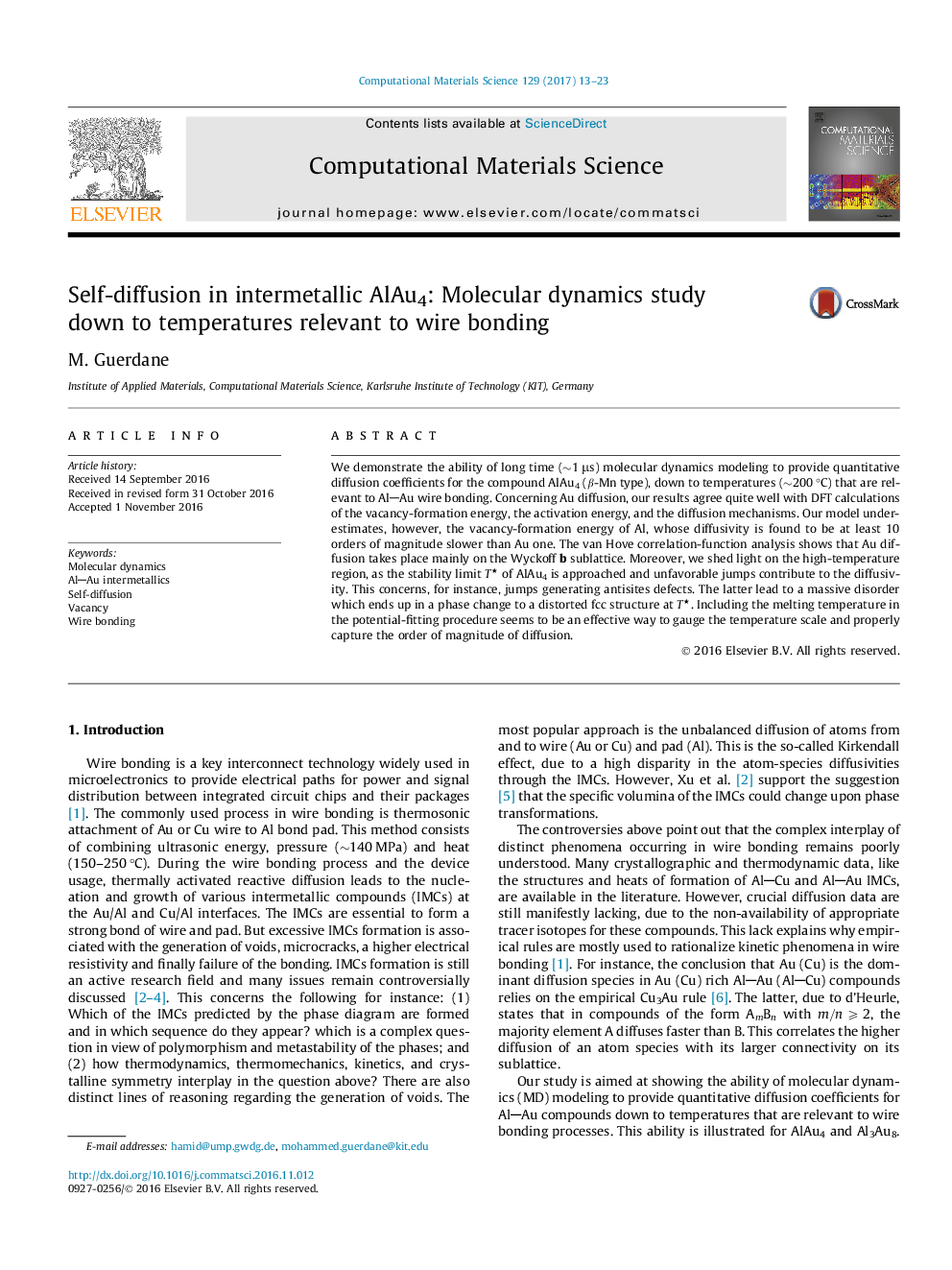| Article ID | Journal | Published Year | Pages | File Type |
|---|---|---|---|---|
| 5453450 | Computational Materials Science | 2017 | 11 Pages |
Abstract
We demonstrate the ability of long time (â¼1 μs) molecular dynamics modeling to provide quantitative diffusion coefficients for the compound AlAu4 (β-Mn type), down to temperatures (â¼200 °C) that are relevant to AlAu wire bonding. Concerning Au diffusion, our results agree quite well with DFT calculations of the vacancy-formation energy, the activation energy, and the diffusion mechanisms. Our model underestimates, however, the vacancy-formation energy of Al, whose diffusivity is found to be at least 10 orders of magnitude slower than Au one. The van Hove correlation-function analysis shows that Au diffusion takes place mainly on the Wyckoff b sublattice. Moreover, we shed light on the high-temperature region, as the stability limit Tâ
of AlAu4 is approached and unfavorable jumps contribute to the diffusivity. This concerns, for instance, jumps generating antisites defects. The latter lead to a massive disorder which ends up in a phase change to a distorted fcc structure at Tâ
. Including the melting temperature in the potential-fitting procedure seems to be an effective way to gauge the temperature scale and properly capture the order of magnitude of diffusion.
Related Topics
Physical Sciences and Engineering
Engineering
Computational Mechanics
Authors
M. Guerdane,
